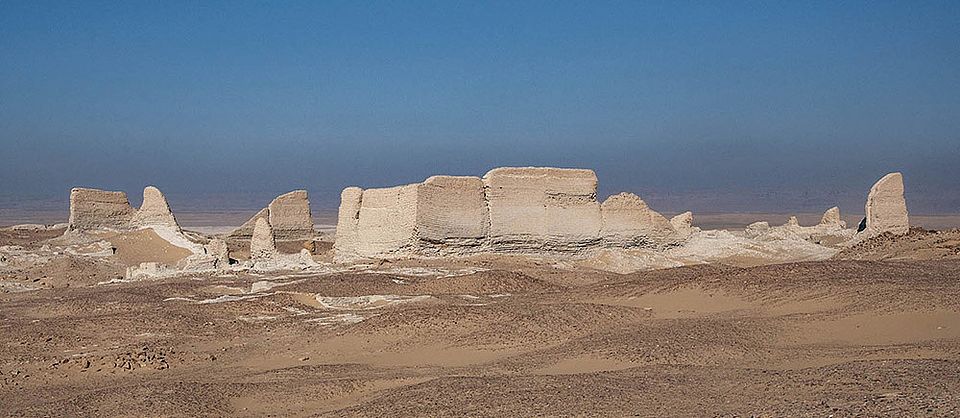/ Research / Reto Caluori (University of Basel)
Climate change in antiquity: mass emigration due to water scarcity

The absence of monsoon rains at the source of the Nile was the cause of migrations and the demise of entire settlements in the late Roman province of Egypt. This demographic development has been compared with environmental data for the first time by professor of ancient history, Sabine Huebner of the University of Basel - leading to a discovery of climate change and its consequences.
The oasis-like Faiyum region, roughly 130 km south-west of Cairo, was the breadbasket of the Roman Empire. Yet at the end of the third century CE, numerous formerly thriving settlements there declined and were ultimately abandoned by their inhabitants. Previous excavations and contemporary papyri have shown that problems with field irrigation were the cause. Attempts by local farmers to adapt to the dryness and desertification of the farmland - for example, by changing their agricultural practices - are also documented.
Volcanic eruption and monsoon rains
Basel professor of ancient history Sabine R. Huebner has now shown in the US journal Studies in Late Antiquitythat changing environmental conditions were behind this development. Existing climate data indicates that the monsoon rains at the headwaters of the Nile in the Ethiopian Highlands suddenly and permanently weakened. The result was lower high-water levels of the river in summer. Evidence supporting this has been found in geological sediment from the Nile Delta, Faiyum and the Ethiopian Highlands, which provides long-term climate data on the monsoons and the water level of the Nile.
A powerful tropical volcanic eruption around 266 CE, which in the following year brought a below-average flood of the Nile, presumably also played a role. Major eruptions are known from sulfuric acid deposits in ice cores from Greenland and Antarctica, and can be dated to within three years. Particles hurled up into the stratosphere lead to a cooling of the climate, disrupting the local monsoon system.
New insights into climate, environment, and society
In the third century CE, the entire Roman Empire was hit by crises that are relatively well documented in the province of Egypt by more than 26,000 preserved papyri (documents written on sheets of papyrus). In the Faiyum region, these include records of inhabitants who switched to growing vines instead of grain or to sheep farming due to the scarcity of water. Others accused their neighbors of water theft or turned to the Roman authorities for tax relief. These and other adaptive strategies of the population delayed the death of their villages for several decades.
"Like today, the consequences of climate change were not the same everywhere," says Huebner. Although regions at the edge of the desert faced the harshness of the drought, others actually benefited from the influx of people moving from the abandoned villages. "New knowledge about the interaction of climate, environmental changes and social developments is very topical." The climate change of late antiquity was not, however - unlike today - caused mainly by humans, but was based on natural fluctuations.
